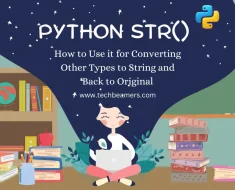We’ve all been here; you’re with a group of friends but someone inevitably has to figure out where to eat. You ask what people are in the mood for, and you get the classic “I don’t have a preference,” only to be followed by a barrage of preferences after you suggest a restaurant you’ve been meaning to check out. Now, you’re just back to square one.
Google thinks adding generative AI to Google Maps can help. Think of it as a personal assistant on Google Maps that can help you discover new things to do or upcoming restaurants within your given parameters. Google has been pushing generative AI lately, but this Google Maps update could be the feature that sees the most use and that’s also taking into account Circle to Search.
Sometimes you want a little help when figuring out where to go.
More Than Just Directions
For this update, Google is infusing generative AI and large language models into its Maps app. The AI will leverage more than 250 million places on Google Maps, as well as a ton of insight from 300 million contributors who have submitted ratings, reviews, and photos.
You plug in your request into Google Maps and it’ll spit out a bunch of suggestions where you can even ask it follow-up questions. In Google’s example, you may be looking for “places with a vintage vibe in SF” where it will recommend thrift stores, record shops, and flea markets. If you want lunch afterward, you can follow up on your original request and the AI assistant will keep your original frame of vintage vibes in mind.
This ability to follow up will make Google Maps great at improvising, like if your meetup with friends gets hit with a sudden downpour. You can ask Google Maps for rainy-day activities, and even follow that request up by narrowing it down to kid-friendly indoor activities.
The ability to follow up with Google Maps’ AI will take the guesswork out of finding somewhere to go.
A More Practical Use for AI
Google says it will trial its Maps AI assistant with “Local Guides” in the U.S. first. These are a dedicated group of users who have heavily contributed to reviews or ratings, like Yelp’s Elite Squad. This AI infusion for Google Maps is still in early access and Google hasn’t shared when it plans to roll this out to the rest of its users.
Once it does, we could see this being one of the most practical uses of generative AI. No more trying to figure out a restaurant that works for everyone, no more decision paralysis with all the available options, and no more wasting time searching for something while you’re hangry.





